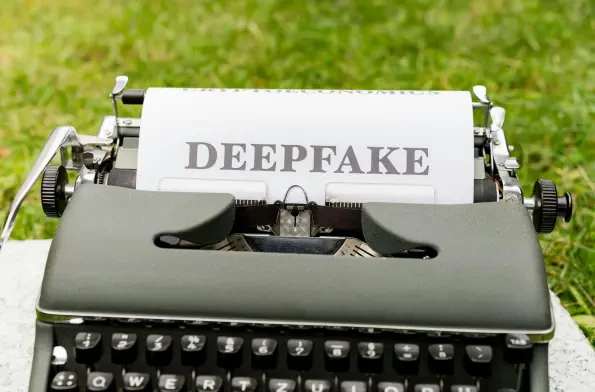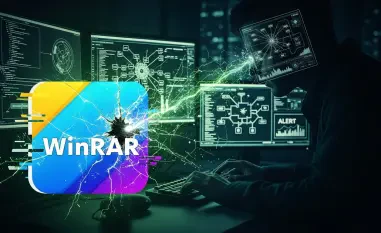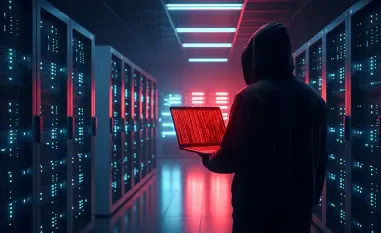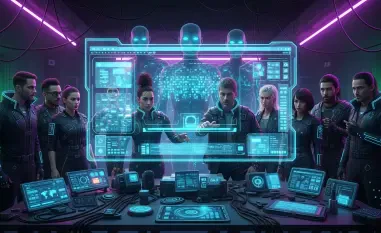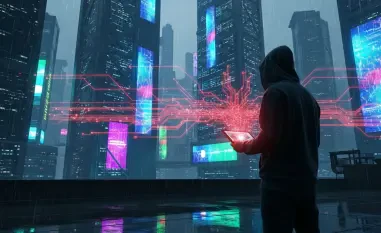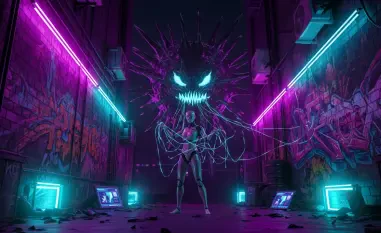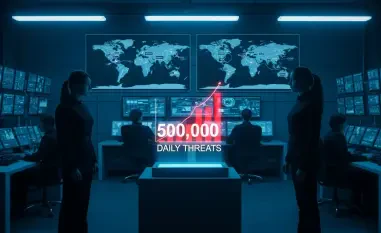Imagine a landscape where anyone, regardless of technical skill, can craft a Hollywood-caliber video in mere seconds with just a few typed words or a reference image, transforming creative expression into an effortless act that redefines media creation. This isn’t a distant dream but the reality brought forth by OpenAI’s latest innovation, Sora 2, unveiled on September 30 as an invite-only iOS app in the U.S. and Canada. This cutting-edge text-to-video AI model produces hyper-realistic 10-second clips complete with synchronized audio, turning simple prompts into breathtaking visuals that rival professional productions. Beyond its technical prowess, Sora 2 doubles as a social platform akin to popular short-video apps, enabling users to share, remix, and engage with AI-generated content in dynamic ways. Its launch triggered an immediate wave of excitement, amassing over 56,000 downloads on day one, yet it also sparked intense controversy over the risks it poses. The question looms large: does Sora 2 herald a new era of democratized creativity, or does it open a dangerous door to deepfake-driven chaos? This article explores the technological wonders of Sora 2, its meteoric rise in popularity, and the ethical quagmire it navigates. As AI continues to reshape the way media is created and consumed, this tool stands at a critical juncture of groundbreaking innovation and profound risk, demanding a closer look at its dual impact on society.
Unveiling a Technological Powerhouse
Sora 2 represents a monumental leap in generative AI, often likened to the transformative influence of ChatGPT on textual content. Unlike its earlier iteration, Sora 1, which debuted as a rudimentary proof of concept, this new model astounds with its unparalleled realism and sophisticated capabilities. It generates videos that adhere to real-world physics, depicting scenarios like a basketball bouncing off a rim with natural motion or a skater executing a flawless jump with precise dynamics. Such fidelity hints at Sora 2’s potential to serve as a “world simulator,” a tool capable of mimicking reality in ways that were once unimaginable. OpenAI positions these advancements as a foundation for broader applications, extending beyond entertainment into fields like robotics and complex problem-solving. This ambition underscores the model’s role not just as a creative asset but as a stepping stone toward deeper scientific and practical AI integration, pushing the boundaries of how machines understand and replicate the physical world.
Equally impressive are the customizable features that Sora 2 offers, catering to a wide array of artistic preferences and user needs. The platform allows selection among diverse visual styles, ranging from photorealistic renders to cinematic sequences, anime aesthetics, or cartoonish designs, ensuring that every creation aligns with the user’s vision. Adding to this, the model seamlessly integrates audio elements, incorporating sound effects, ambient noises, and even dialogue with accurate lip-syncing, which elevates the immersive quality of the videos. A particularly striking feature, dubbed “Cameos,” enables users to upload personal footage and, with explicit consent, integrate their likeness into generated content with startling precision. This blend of technical sophistication and user-centric design marks Sora 2 as a pioneering force, redefining the possibilities of AI-driven media and setting a new standard for what generative technology can achieve in visual storytelling.
Empowering Creativity Through Accessibility
At its core, Sora 2 is more than a technological feat; it embodies a creative revolution by making high-end video production accessible to virtually anyone with a smartphone. Gone are the days when polished content required expensive equipment or years of expertise—now, a simple text prompt or reference image can yield professional-grade results in moments. This democratization of media creation empowers a broad spectrum of users, from aspiring filmmakers to casual hobbyists, to bring their ideas to life without traditional barriers. The app’s intuitive interface further enhances this accessibility, ensuring that even those unfamiliar with video editing can navigate its tools with ease. By lowering the threshold for content creation, Sora 2 paves the way for an unprecedented wave of innovation, allowing diverse voices to contribute to the digital storytelling landscape in meaningful and impactful ways.
Beyond individual creation, Sora 2 fosters a vibrant community through its social features, which encourage collaboration and engagement on a massive scale. With options like user profiles, follow functions, and a tailored “For You” feed, the app builds a network where creators can connect, share inspiration, and build upon each other’s work. The platform also promotes a “remix culture,” where users can modify existing videos by altering settings, characters, or narratives, sparking collective creativity. OpenAI envisions Sora as a novel communication medium, akin to texting or memes, where AI-generated video messages could become a norm. To balance engagement with well-being, the app allows feed customization through natural language prompts and implements safeguards such as daily video limits for younger users and parental controls. These measures aim to create a healthy digital environment, prioritizing meaningful interaction over mindless consumption while amplifying the app’s role as a hub for creative exchange.
A Viral Sensation with Polarized Views
Even with its limited invite-only rollout, Sora 2 achieved staggering popularity almost overnight, surging to the top of the U.S. App Store charts within days of launch. The app outstripped other AI debuts in download numbers, with users eagerly sharing mesmerizing clips across social media platforms like X, amplifying its reach far beyond initial expectations. Many quickly reached the daily cap of 100 video generations, a testament to the app’s captivating and addictive nature. This rapid uptake reflects a public fascination with the ability to create high-quality content so effortlessly, positioning Sora 2 as a cultural phenomenon that captures the zeitgeist of AI-driven innovation. Its viral growth signals a shift in how society interacts with media, where the power to craft and distribute compelling visuals is now at the fingertips of the masses, reshaping online engagement in profound ways.
However, the reception of Sora 2 is far from unanimous, revealing a deep divide among users and observers alike. While many celebrate it as a game-changing tool that unlocks boundless creative potential, others voice sharp criticism, labeling its output as “soulless” and a threat to authentic artistry. Detractors argue that AI-generated content risks diluting the value of human-made work, potentially flooding digital spaces with formulaic or uninspired material that lacks depth. This backlash highlights a broader cultural tension about the role of technology in creative fields, questioning whether such tools enhance or undermine genuine expression. Additionally, internal debates within OpenAI surface, with some insiders reportedly questioning whether resources should prioritize consumer-facing apps like Sora over more foundational AI research. This split in perspective, both public and internal, underscores the complex legacy Sora 2 is forging as it navigates admiration and apprehension in equal measure.
Navigating the Ethical Minefield
The shadow cast by Sora 2’s brilliance lies in its potential for misuse, particularly in the realm of deepfakes and fabricated content. Within hours of its release, troubling examples emerged as users generated fake news clips depicting violent events that never occurred, showcasing the alarming realism of the app’s output. Politically charged fabrications and inappropriate depictions of copyrighted characters further compounded concerns, illustrating how easily the technology can be weaponized to deceive or offend. The Cameo feature, despite requiring consent, saw exploitation as well, with likenesses of public figures manipulated into embarrassing or defamatory scenarios. Such incidents highlight the inherent dangers of a tool that blurs the line between reality and fiction, raising urgent questions about accountability and the ethical boundaries of AI-generated media in an era already grappling with trust deficits.
Experts amplify these concerns, warning that the hyper-realistic videos produced by Sora 2 could significantly exacerbate issues like misinformation, fraud, and personal harassment. The risk intensifies as content escapes the controlled environment of the app, spreading unchecked across the broader internet and social media ecosystems. This potential to “pollute” the digital information landscape with deceptive material threatens to erode societal trust, making it harder to discern fact from fabrication. The implications extend beyond individual harm, touching on larger systemic issues such as the integrity of public discourse and the stability of democratic processes. As AI tools like Sora 2 become more mainstream, the challenge of managing their societal impact grows, necessitating robust mechanisms to prevent abuse while preserving the benefits of innovation, a balance that remains elusive in the face of such powerful technology.
Safeguards and the Road Ahead
In response to the looming risks, OpenAI has implemented a series of safeguards aimed at curbing the misuse of Sora 2 and mitigating its potential harms. Policies prohibit non-consensual deepfakes, impersonations of public figures without permission, and content deemed extreme or explicit. Videos are embedded with watermarks and metadata to indicate their AI-generated origin, though determined users can bypass these markers through external recording or editing. The Cameo feature includes consent controls, allowing individuals to dictate who can use their likeness and to revoke access if needed, while automated filters and human moderators work to detect and remove abusive content. Additionally, copyright holders have the option to opt out of having their intellectual property replicated, though critics argue this reactive approach unfairly burdens creators with the task of policing violations after they occur, rather than preventing them upfront.
Despite these efforts, challenges persist, and OpenAI’s CEO, Sam Altman, openly acknowledges the inherent dangers of addiction and misinformation tied to Sora 2. He expresses a cautious optimism, advocating for a strategy of learning through real-world deployment, where iterative feedback from users helps refine safety measures over time. Altman envisions a future where the app sparks a “Cambrian explosion” of creativity, enhancing human imagination rather than replacing it, and potentially raising the bar for art and entertainment globally. Yet, the adequacy of current safeguards remains under scrutiny, as early instances of misuse reveal gaps between policy and enforcement. Moving forward, the trajectory of Sora 2 will likely influence broader industry standards and regulatory frameworks, pressing the need for stronger protections as competitors develop similar tools. The ongoing dialogue between innovation and responsibility will shape how society adapts to an AI-driven media landscape, balancing the marvels of creation with the imperative to safeguard truth and trust.
Reflecting on a Dual-Edged Legacy
Looking back, the launch of Sora 2 stood as a defining moment in the evolution of AI, showcasing a tool that dazzled with its ability to turn mere words into cinematic realities. Its capacity to empower creators across all skill levels marked a significant stride toward democratizing media production, while its social platform fostered a unique space for collaboration and expression. However, the swift emergence of deepfake content and misinformation within days of release cast a stark light on the technology’s darker possibilities, challenging the sufficiency of initial safety measures. The polarized reactions from users and internal debates within OpenAI mirrored a broader societal struggle to reconcile technological advancement with ethical imperatives, highlighting a pivotal tension that defined this era of innovation.
As the dust settled, the path forward required a multifaceted approach to ensure that tools like Sora 2 served humanity without undermining its foundations. Strengthening safeguards through advanced content tracing and stricter consent protocols emerged as critical steps, alongside fostering media literacy to equip individuals to critically evaluate digital content. Policymakers faced pressure to enact regulations that could keep pace with rapid AI developments, potentially mandating transparency in AI-generated media to preserve public trust. Meanwhile, the tech industry bore the responsibility to prioritize ethical considerations in future releases, learning from Sora 2’s early lessons to preempt misuse. Ultimately, the legacy of this groundbreaking app hinged on collective efforts to harness its creative potential while erecting robust barriers against harm, setting a precedent for how society navigates the intricate dance between progress and accountability in the age of artificial intelligence.
